
The InfoLit modules can be used in two ways:
The 80+ modules use the following formats to interactively deliver instruction:
Please note:
We highly recommend you use direct links for the modules in most cases outside of Canvas (listed on the tab to the left called Direct Links for All Modules). The direct links force authentication to the modules, whereas embedded videos do not and may display an error message.
Using InfoLit modules in Canvas:
All module types can be embedded inside your Canvas course with the benefit of being integrated within the flow of a course. Basic instructions for adding this content can be found here.
Quizzes can be integrated so that student scores are reflected in your gradebook. Basic instructions for adding quizzes and assignments can be found here.
Please contact Jeffrey Potter (Digital Services librarian) for help embedding tutorials or creating assignments in Canvas.
Using InfoLit modules on web sites:
The InfoLit modules are subscription-based and only available to PGCC authenticated users (students, faculty, staff). Please use the direct links listed in Direct Links for All Modules.
Embed links are available by contacting our Digital Services librarian but may not preview or play properly due to the way the authentication is set up.
This option should be used for graded content (tests and quizzes) only. See here for adding links for ungraded content.
Step 1: Go to the course and click Assignments, then click the + Assignment button to create a new assignment.
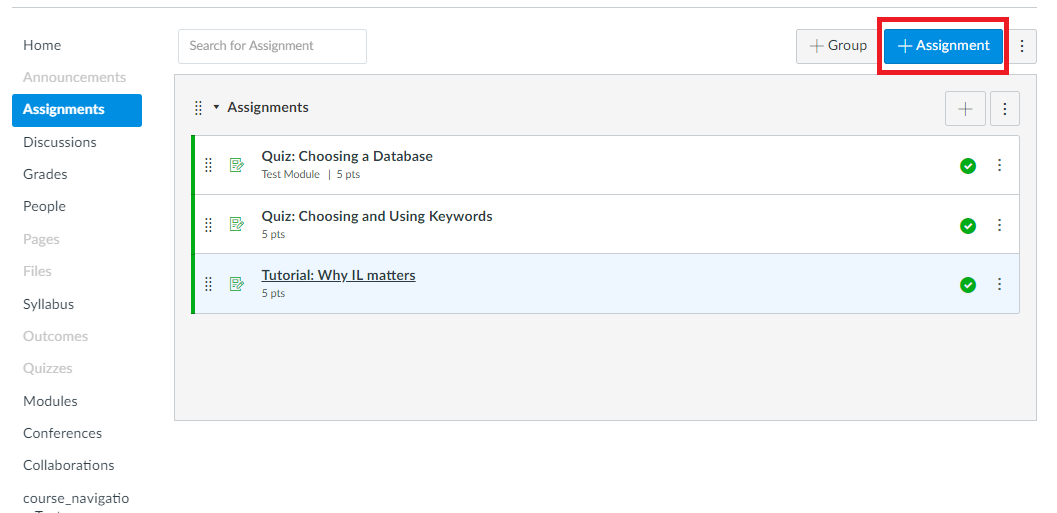
Step 2: In the new assignment settings complete the following:
Quizzes: 5 points
Pre- or Post-Test: 20 points
If you assign a different point value, the grade will scale when it is passed back from Credo, e.g. a 4/5 will scale to 8/10 or 80/100. However, if you change the point value after students have taken the quiz, any grades already logged in the grade column will not automatically rescore (this is a function of Canvas' system, not Credo).
Make sure not to assign a point value of 0, which will cause all student scores to display in the gradebook as 0.
Step 3: Click on "Find" next to "Enter or Find External Tool URL"

Locate the Credo InfoLit tool and and click on the search icon:
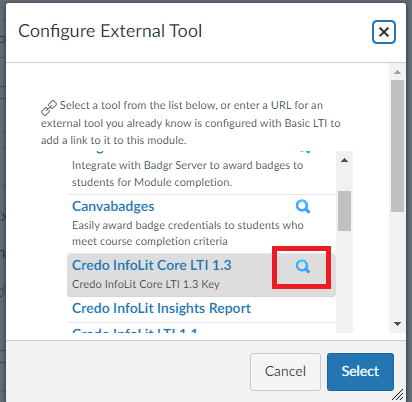
Select the Quiz or Test of your choice. As you are creating an Assignment, make sure the content you are selecting shows as [Graded]
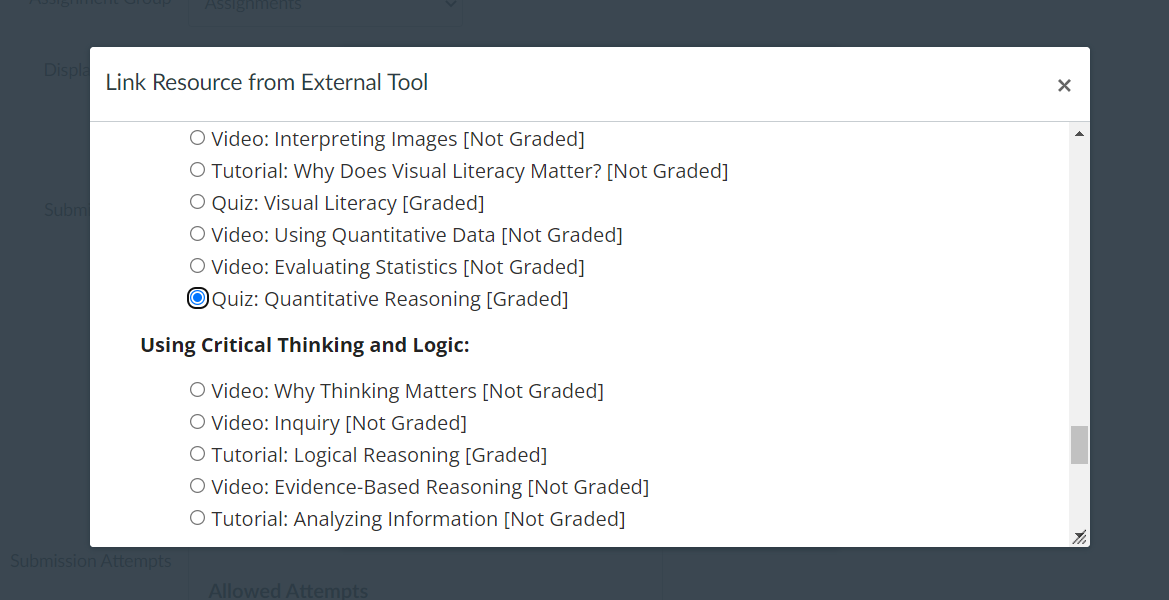
Scroll to the bottom and click on Submit

Then "Select"
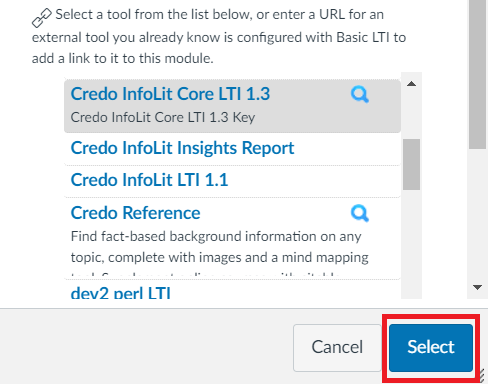
Step 4: Check and refine optional settings:
Step 5: Click "Save and Publish" if you want to publish the assignment right away, or just "Save" if you will publish it later. The new assignment should display either embedded in the page or as a link to open in a new window, depending on the setting selected.
Step 1: Go to Modules in the left-hand navigation.

Step 2: Choose a module you'd like to add the link to, and click the + icon.

Step 3: In the Add Item popup, for the Add dropdown, select assignment then select the item you created earlier (you may need to scroll down the list to locate it), select the indentation level you desire, then click Add Item.
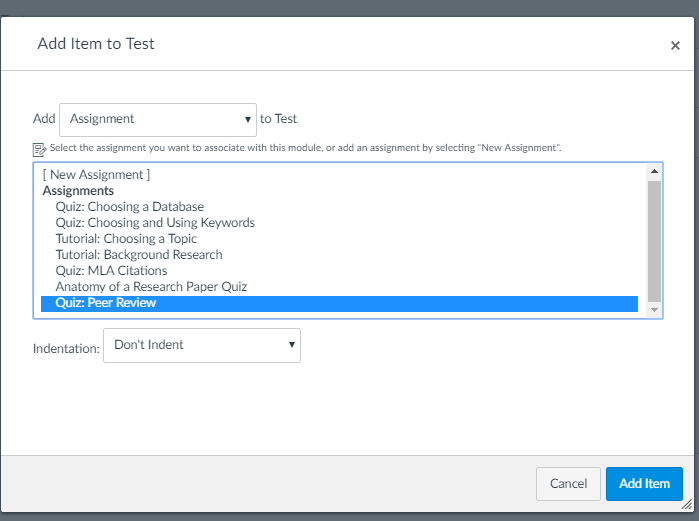
This option should be used for ungraded content (tutorials and videos) only. See here for adding links for graded content.
Step 1: Go to the course and click into the Modules page.
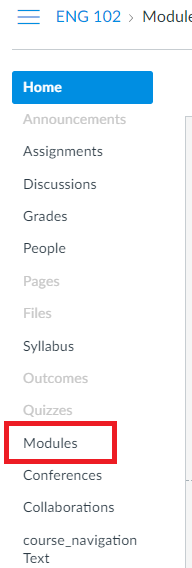
Step 2: Locate the Module where you'd like to add the content, or create a new Module by clicking the + Module button at the top of the page. Click the + button on the Module where you want to add an item. This will open the Add Item dialog box.
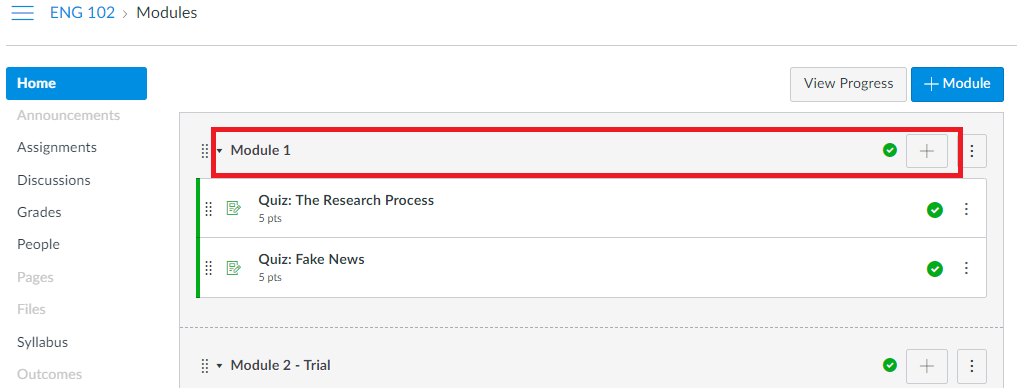
Step 3: In the Add Item box, select External Tool from the list of content types available to add.
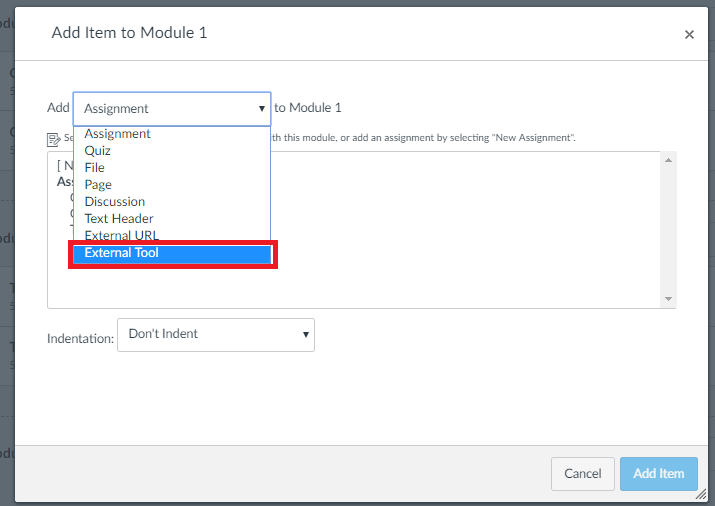
Step 4: Locate the Credo InfoLit tool and and click on the search icon:
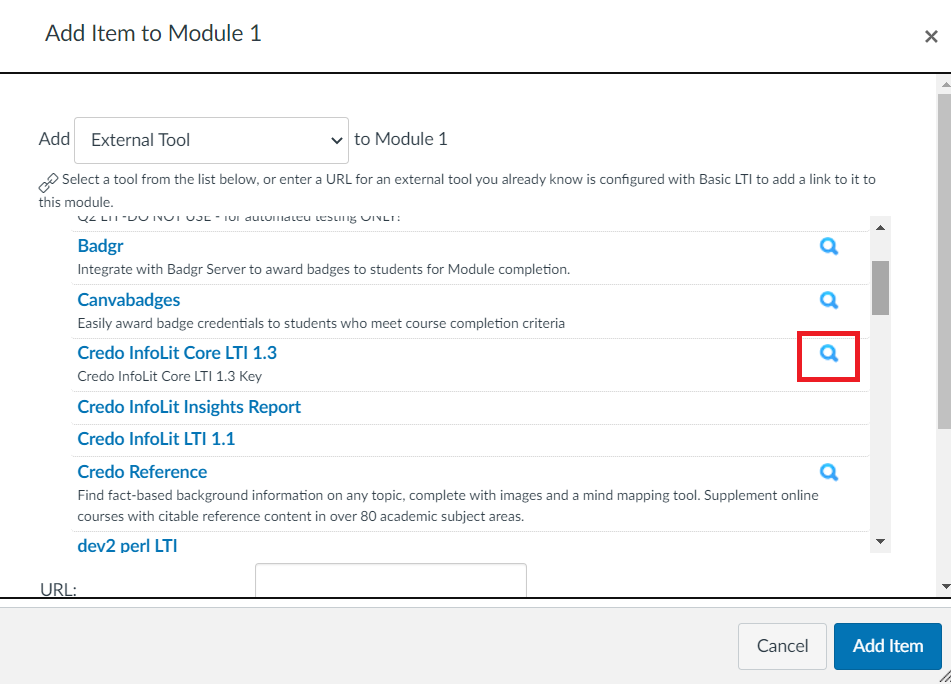
Step 5: Select the Tutorial or Video of your choice. As you are adding the content directly to a Module, make sure the content you are selecting shows as [Not Graded]

Scroll to the bottom and click on Submit.

Then Add Item
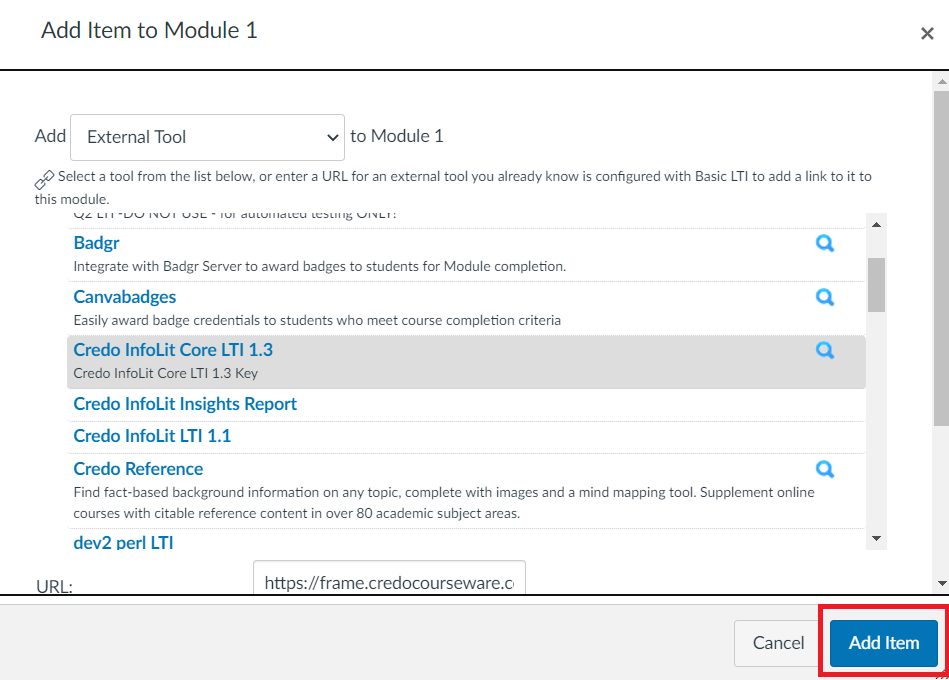
The new item should now appear in the Module. Make sure to click the publish button when you are ready for it to appear to students.
